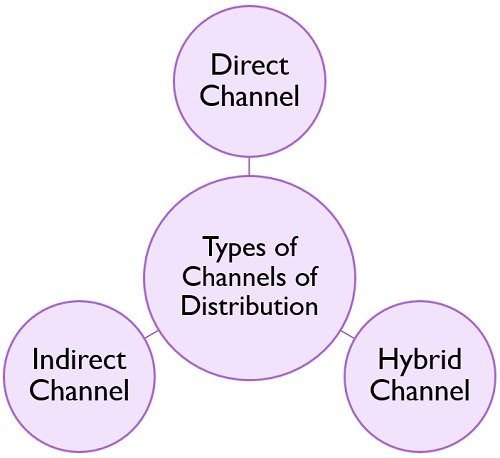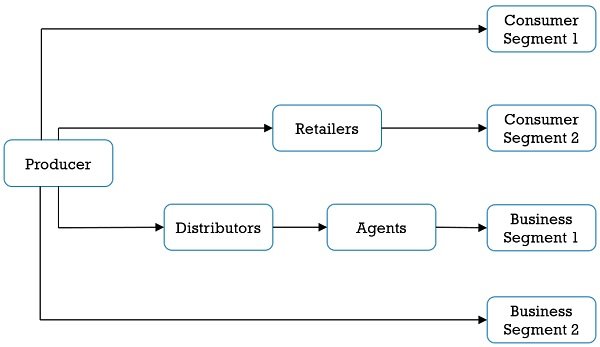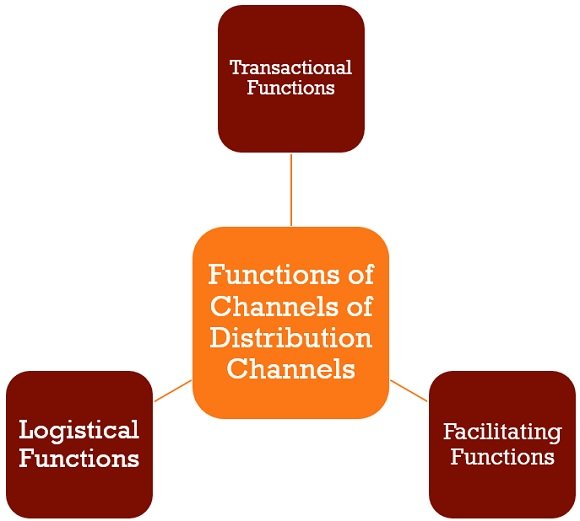Definition: The word ‘distribution’ means the allocation of something to its recipients. Hence, the term, ‘channels of distribution refers to the various mediums used for the purpose of distribution.
Channels of Distribution or Distribution Channel can be defined as the path taken by the good or service when they move from manufacturer to the end consumers. The movement of the goods implies the physical distribution of the goods or the transfer of ownership.
It is the network of intermediaries such as wholesalers, retailers, distributors, agents, etc., who carry out a number of interrelated and coordinated functions in the flow of goods from its source to its destination. Additionally, it creates utility of time, place, form, and possession to the product by the quick and efficient performance of the function of physical distribution.
Have you ever wondered that product manufacturing units of various companies are set up at a particular location only, but the consumers of that product are everywhere across the globe, so how these goods are available to the people residing in a place distant from the place where the manufacturing unit is located? Well, it is the channels of distribution that act as an intermediary to make the goods available to the intended consumer.
Types of Channels of Distribution
Channels of Distribution implies the means through which the good or service need to pass to reach the intended consumer. Based on the number of intermediaries involved, the channel of distribution can be short or long. Further, it has a great impact on the company’s sales, as the higher the availability of the goods, the more will be its sales.
Depending on the type of the product, i.e. good or service, different marketing channels are employed by the companies.
There are three main types of channels of distribution, discussed hereunder:
Direct Channel
Prior to reaching the hands of the consumers, goods and services pass through various hands. However, there are certain instances when the producer sells goods directly to their customer, then such a channel is known as a direct channel.
Hence, no middlemen exist in the case of the direct channels. And to do so, the company can supply the product to the customer via their own online or retail store, or salesman at the customer’s doorstep and arranging their own delivery system. It is also called a Zero Level Channel. Example: Consultancy firms, Passenger and freight transport services, banks, etc.
Indirect Channel
When the producer produces goods on a large scale, it is difficult to make direct selling of the goods to the customers. In this way, middlemen come into the picture to ensure the availability of the goods to its customers. It may include wholesalers and retailers. So, we can say that when there are a host of intermediaries involved in the distribution process, it amounts to the indirect channel of distribution.
- One Level Channel: Where only one middleman (either wholesaler or retailer) is involved.

- Two Level Channel: Where two middlemen (both wholesaler and retailer) are involved.

- Three Level Channel: Where along with wholesalers and retailers, the mercantile agent is also involved. Hence, the producer deals with a mercantile agent, then the wholesaler buys goods from that agent, and sells them to retailers, who further sell them to its ultimate consumer.

Hybrid Channels
The combination of the direct channel and indirect channel is called the hybrid channel of distribution. When the manufacturer uses more than one channel to reach the final consumer, it is said to be using the hybrid channel. This attracts more consumers and facilitates more sales.
Suppose a manufacturer owning their own retail outlet and simultaneously, offering goods to customers via e-commerce platforms or other retailers.
Functions of Channel of Distribution
The functions performed by the channels of distribution are divided into three main categories:
- Transactional Functions: Functions like buying, selling, and risk-bearing which are relevant to a transaction are called transactional functions. Producers sell goods to intermediaries, who further sell them to the customers. In this way, the title of goods changes hands, and goods flow from producer to consumer. In the absence of any buying and selling, there won’t be any transaction.
- Logistical Functions: It involves the physical exchange of the goods such as assembling, storage, sorting, grading, packing, and transportation. This is to make certain that goods must reach the marketplace at right time and sell to the consumers conveniently.
- Facilitating Functions: Functions like post-purchase service, maintenance, financing, information dissemination, channel coordination, etc form part of facilitating functions.
Objectives of Distribution channels
- To increase the availability of the product to the potential customers.
- To fulfill customer’s requirements by providing quality rich services.
- To obtain promotional support from channel members.
- To procure timely and detailed market information.
- To increase cost-effectiveness.
Factors Influencing Choice of Distribution Channels
Market Consideration:
Size of the Customer, potential volume of sales, concentration of buyers, size of the purchase order, and so forth are some of the factors which are considered before choosing the distribution channel.
Product Considerations:
Factors related to perishability, bulkiness, product value, etc. related to the product are taken into consideration while making a choice between the channels of distribution.
Middlemen Considerations:
Types of intermediaries, services provided by middlemen, the attitude of middlemen, availability of middlemen, and channel competition are the factors that influence the choice of channel.
Company Considerations:
Cost of distribution, management’s ability, services provided by seller, long-run effect on profit, the extent of channel control, financial resources, and experience and ability are the company considerations.
A word from Business Jargons
Distribution Channel is the path followed by the good or service with multiple levels or distribution points, from the production to the final consumer. It is an important element of the downstream supply chain which includes a host of intermediaries such as wholesalers, retailers, distributors, agents, merchants, online stores, etc., which act as a link between producer and consumer. These are called marketing channels.

gurublast says
nice work